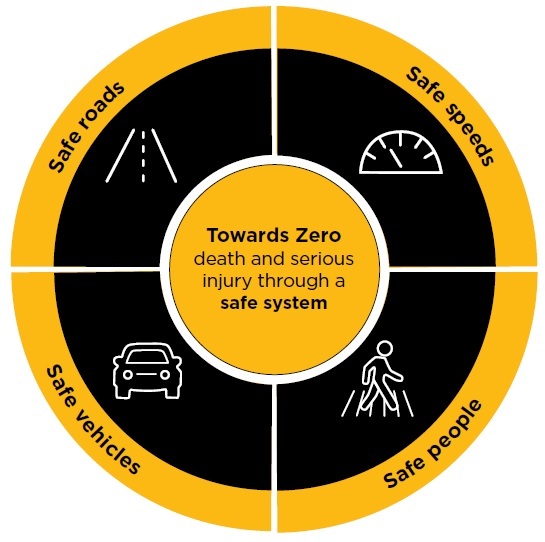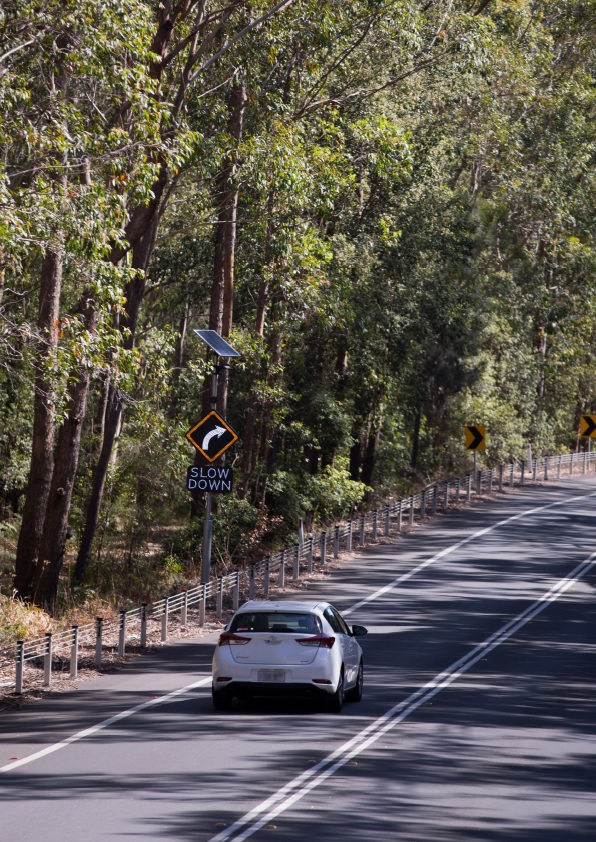2026 Road Safety Action Plan
Someone is killed or hospitalised every
because of a crash on NSW roads
The Plan
The 2026 Road Safety Action Plan features new targets to halve deaths and reduce serious injuries by 30% on NSW roads by 2030. This will be achieved by building on the success of the Road Safety Plan 2021 and will focus on stronger local government action, engagement and education programs and using technology in the fight to end road trauma.
NSW's road safety targets
2030
Halve deaths and reduce serious injuries by 30% from 2018-2020 levels by 2030.
2050
NSW has set an aspirational target of zero fatalities and serious injuries on our roads by 2050.
The road trauma challenge in NSW
The NSW road network gives all of us access to work, school, friends, families and the services we need. For many, it’s a workplace, and for all, it’s a fundamental part of everyday life that keeps the economy moving.
But sadly, lives are lost, and people are seriously injured on our roads, every day. Each year, over two-thirds of fatalities in NSW happen on country roads.
Almost half (47.7%) of people who die on country roads are country locals, and sadly males account for most of the fatalities. Fatalities on country roads also make up almost 2/3 of the total fatalities across the state.
The majority of serious injuries resulting from road crashes happen in metropolitan areas. Unlike our long downward trend in fatalities, the number of serious injuries per year is not declining.
We know that behavioural factors in fatal crashes include speeding, tired drivers and riders, drink driving, seat belt non-usage, and illicit drugs being present.
People who walk or ride a bicycle or motorcycle are vulnerable in a crash as the unprotected body can only tolerate so much force.
For road trauma data and information for staying safe on our roads, visit the Centre for Road Safety website.
The Safe System
The 2026 Road Safety Action Plan continues to adopt the internationally recognised Safe Systems approach, which is holistic and proven approach that considers how people, vehicles, speeds, and roads work together to create a safe system. The system acknowledges that:
- The human body has physical limits to withstanding the impact of a crash.
- People sometimes make mistakes – but this shouldn’t cost anyone their life.
- Roads, roadsides, travel speeds and vehicles need to be designed to help avoid a crash or reduce the impact of a crash if it happens.
- Road safety is a shared responsibility. We all need to make decisions with safety in mind, from the design of our roads and vehicles, investment, laws and education, to each road user acting safely every day.

Priority areas
Taking action to save lives, over the next five years the NSW Government will deliver across five priority areas:
Creating safer country roads and urban places
Enhancing road safety in local communities
Increasing the safety of light vehicles, heavy vehicles and protective equipment
Making safer choices on our roads
Ensuring the safety of vulnerable and other at-risk road users
A strong evidence base
Road safety actions over decades have saved thousands of lives. From the introduction of mandatory seatbelts in the 1970s to the establishment of the Community Road Safety Fund, there have been a number of initiatives introduced that have helped us get closer to our goal of zero lives lost on NSW roads.
Road Safety Plan 2021 outlined proven initiatives to move NSW closer to our target, and the 2026 Road Safety Action Plan builds on the success we have seen. As part of our Future Transport Strategy, NSW has set a target of zero fatalities and serious injuries on our roads, and you can find out more about what we have delivered and continue to deliver as we roll-out our new plan.
Road safety is a shared responsibility
Achieving our goal of zero trauma on NSW roads will require all of us to get on board.
In the development of the 2026 Road Safety Action Plan, we consulted with partners, stakeholders and members of the NSW community. The consultations we conducted were well-attended and ultimately helped inform some of the initiatives you see in the plan. The 2026 Road Safety Action Plan Engagement Summary provides an overview of the engagement activities and feedback across NSW during the consultation.
Additionally, we received over 3,500 submissions to our Community Attitudes Survey. The Community Attitudes Survey Report is available as well as a summary of the findings.
Community Road Safety Fund
The Community Road Safety Fund was established in 2013 as a legal requirement to ensure fines from camera detected speeding, red-light and mobile phone use offences are only used for road safety purposes. The NSW Government also allocates additional funds to deliver targeted road safety programs and help reduce the number of deaths and serious injuries on NSW roads.
We are committed to working towards the goal of zero trauma on the transport network by 2056 set by Future Transport 2056. The Community Road Safety Fund allows us to continue to deliver the commitments in the 2026 Road Safety Action Plan and improve safety for our community.
Since the Fund started in 2013 over 1,400 lives have been saved. In this time we have delivered programs that are saving lives and preventing serious injuries, including:
- The world’s first mobile phone detection cameras
- Delivery of life-saving infrastructure safety treatments across the road network
- Testing and rating of child restraints
- High visibility police operations
- Road safety education for children and young people
- Road safety advertising campaigns
- School crossing supervisors and flashing lights at schools
- The Driver Licensing Access Program
- Drink and drug driving reforms
- New and used car safety ratings and vehicle research
- Road safety delivery through partnerships including local governments as well as advocates and ambassadors to promote safety initiatives.

